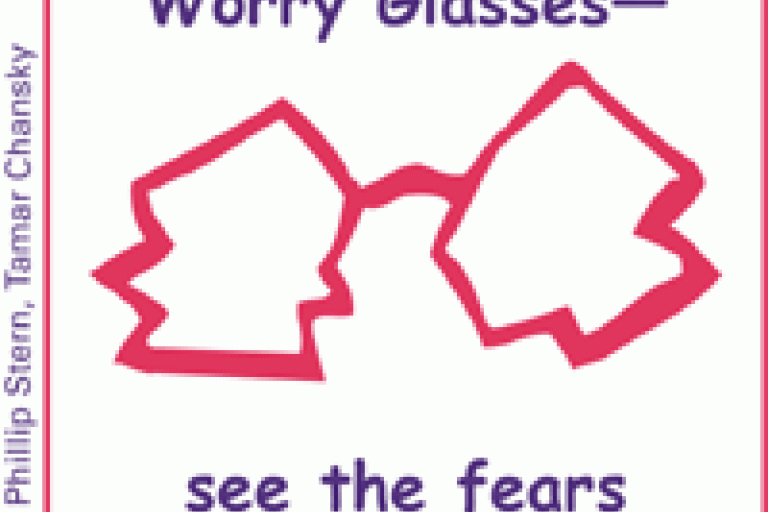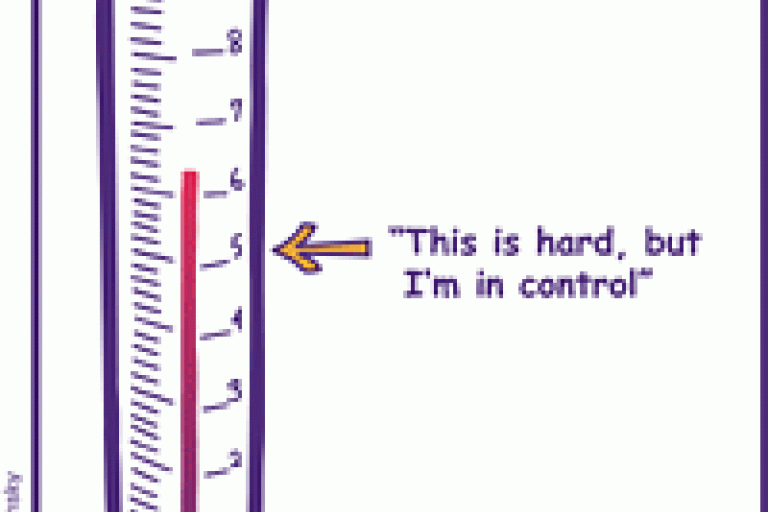
When it comes to taking care of our children, we all want to do the right thing. With treatment for anxiety, the right thing is what works best for your child's needs. With effective treatment, the prognosis for anxiety disorders is very good, but left untreated, the interference from anxiety will become more disabling over time.
Cognitive Behavior Therapy (CBT)-an active skill-focused intervention-is the treatment of choice for anxiety, with the most research evidence for it's lasting success with children. Children have approximately a 70-80% response rate with CBT, and the gains are maintained over time. While typically not a first line of defense in the treatment of anxiety, medications may play an essential role for some children, For example, a child who is excessively sleep-deprived, or has been unable to attend school for an extended period of time may benefit from a time-limited medication strategy to get them sleeping again, or back in school, at which point CBT can begin to advance and maintain progress. Medications can also be helpful for kids who are unable to participate in therapy either because of depression or because the intensity of their anxiety does not allow the emotional space to work on the issues. Similarly, children with Attention Deficit Hyperactivity Disorder or Bipolar Disorder will require medications to control their symptoms.
Cognitive Behavior Therapy:
Teaching kids to challenge their anxious thoughts and understanding of situations, rather than accepting anxious thoughts as the truth, CBT encourages kids to generate more realistic versions of situations and their ability to cope with them. Ready with a new mindset, children then gradually face their fearful situations breaking the challenges down into small, manageable steps. Overtime, children are able to more quickly tap into non-anxious interpretations of situations, and understand that avoidance of feared situations, only makes matters worst, instead the only way to get past anxiety is to face it head on and approach situations until they become used to them.
FAQs:
At what age can a child participate in CBT? Research protocols have documented efficacy in children as young as age 8. With parental direction, children as young as 2 or 3 can learn how to use non-anxious self-talk (using puppets or dolls as models) and desensitization through gradual exposure, even if it is from the vantage point of the parents' arms.
How do I find a therapist who is skilled in CBT? Several organizations maintain referral lists. See the Links page for contact information. Interview potential therapists by asking open ended questions, rather than asking "Do you practice CBT?," ask, "What is your theoretical approach to anxiety treatment?" and listen for key words-cbt, exposure, systematic desensitization.
Are there any harmful effects of CBT? There are no adverse effects of CBT. The greatest risk is that families may dropout prematurely if goals are set too high, or treatment moves at a faster pace than the child is ready for, or if parents are unable to follow through on exposures at home.
How long does treatment last and how quickly should I see results? Children typically begin to show a response to treatment within 4-6 treatment sessions. Typical research protocols entail 16-20 sessions. In a clinical setting, 4-6 months of treatment is average, with periodic booster sessions to maintain gains and reduce risk of setbacks.
Medications:
There are several different medications that can be helpul in concert with cognitive behavior therapy. There are two major classes of medications, long-acting Selective Serotonin Reuptake Inhibitors (SSRIs) such as Prozac, Paxil, Zoloft or Luvox or quick-acting Anxiolytics such as Klonopin, Xanax. Recent concerns about the adverse effects of SSRIs have created much confusion about their safety. Children should be carefully screened and monitored by a child psychiatrist so that signs of agitation and suicidality can be identified and addressed if they occur. For more specific information about psychiatric medications you can consult the following websites, or ask your pediatrician. About Our Kids, New York University Child Study Center: (aboutourkids.org), American Academy of Child and Adolescent Psychiatry (aacap.org)

Cognitive Behavior therapy for most anxiety disorders addresses four main areas of intervention. First is Psychoeducation. Children need an explanation for how anxiety is triggered and maintained, and importantly how feeling anxious is not a reflection of the actual degree of danger or likelihood of risk in a situation.
Instead anxiety results from the brain misperceiving and exaggerating the risk in a situation and making them feel they need to avoid in order to survive. This is the key to being a worry-wise kid, not taking worry's version of the story as an accurate reflection of the situation.

Second is Cognitive Restructuring. Children will be guided to generating and evaluating the accuracy of self-talk-their internal dialogue or appraisal of a situation. Anxious children, like adults, have anxious thoughts about the expectation of threat or harm and the inability to cope, or fears of humiliation, embarrassment or rejection by others. Their first reaction self-talk is typically about the most awful thing that could happen in a situation, commonlycalled the "what if's" and they are taught to "think twice" and identify the most likely thing that would happen in the situation, or the "what else's".
Third, because anxious thinking riles up the body, children are taught breathing and relaxation techniques.
Fourth, children are coached to re-approach their feared situations now prepared with their new skills of smart, worry-wise thinking and calm breathing. Challenges or exposures are taken starting with the easiest (using the child's assessment, or fear temperature as a guide) and working step by step till they reach their goal.














